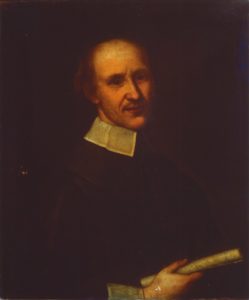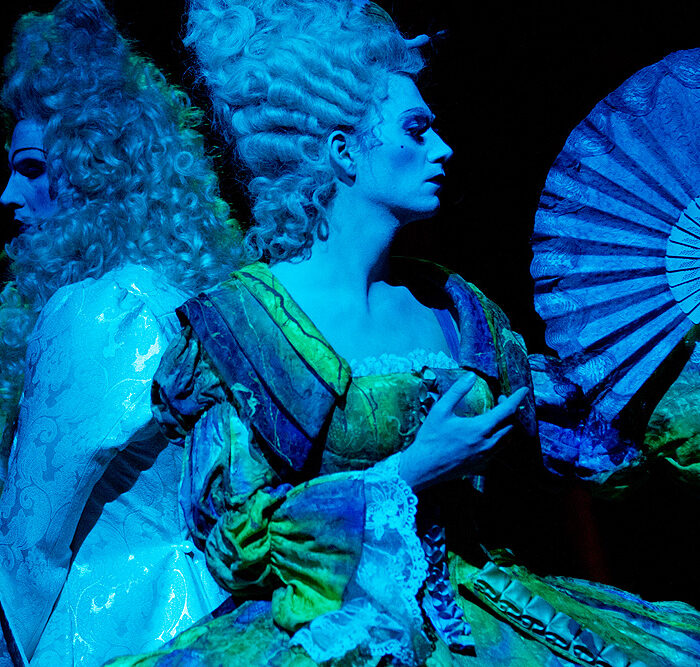
Composer Profile: Giovanni Legrenzi, A Major Venetian Composer of the Late-Barque Era
By John VandevertOn August 12th, 1626, the 17th century Venetian composer Giovanni Legrenzi (1626-1690) was born.
Regarded as one of the most important Venetian composers of the late-Baroque era and widely acclaimed for his operas and instrumental works, especially his sonatas and sacred music, Legrenzi has become one of the many unsung heroes of music history, and his music was even used by the likes of Händel and Bach, the latter using his bass harmonies as exercises for his students. Inspired by the style of Monteverdi and an inspiration to contemporaries like Scarlatti and Vivaldi, the legacy of Legrenzi on the annals of music history and opera, although quiet, can be felt even now in early music ensembles and companies across the world. Let’s take a closer look into who this figure was, his contributions to music, and his legacy.
Giovanni Legrenzi was born in the small city of Clusone, Italy, located in (then) Republic of Venice (now Lombardy). His father was a professional violinist, and had four siblings, two sisters and two brothers. It’s known that his brother, Marco, was himself a musician. Legrenzi’s first introduction to the realm of music came from domestic music making, as well as his participation in the local church, and while the exact one is as of yet unknown the city itself only has three churches.
From 1639-1643, he received formal music education from Marian Academy of Bergamo guided by the aesthetic principles of mid-late Baroque composers like Tomaso Antonio Vitali (1632-1692) and Maurizio Cazzati (1616-1678), Legrenzi quickly gained his compositional skills, and in 1645 he was appointed as the organist of the Basilica Papale di Santa Maria Maggiore in Rome, the same chiesa (church) where organist Licinio Refice, along with “Giovani Scuola” composers Lorenzo Perosi and Raffaele Casimiri, were instrumental in revitalizing Italy’s sacred music heritage in the early 20th century.
In 1651, Legrenzi would be officially ordained, and not only become Chaplain but First Organist, a huge honor at the time. But only three years later in 1654, Legrenzi would begin publishing his music starting with his first volume of liturgical music, (Op.1, Concerti Musicali per uso di Chiesa). In 1656, he left Santa Maria and in 1657, he became the maestro di cappella at the Academy of the Holy Spirit in Ferrara, home of the affluent Este family and birthplace of the eminent composer Girolamo Frescobaldi (1583-1643).
By the early 1660s, Legrenzi was routinely publishing his works, his first two operas (Nino, il giusto and Achille in Sciro) dating to 1662 and 1663 respectively, and had now eight published collections of work to his name. It was during this time when he would gain his fame, his operas becoming staple pieces of Venetian operatic literature in the theaters of his time. However, the period of 1665-1670 is unknown, although he’d publish a volume of work (Sacri e Festivi Concerti) and his fourth opera (Tiridate). When he emerged in 1670, he’d begun working as a music teacher at Santa Maria dei Derelitti (commonly known as the Church of the Ospedaletto). By this time, it was clear that Legrenzi wasn’t financially struggling but exactly the opposite. He had commissions, publishing income, performance fees, and even had private land in Clusone, and it is speculated that during these silent years he went here as break from his work.
Throughout Legrenzi’s ample career, he was tirelessly publishing music, in the 1660s publishing nine volumes, while in the 1670s to 1680s, publishing another ten. When it comes to his 19 operas, these were also consistently composed, his last opera (Ifianassa e Melampo) dating to 1685, five years before his death in 1690. However, in the 1670s Legrenzi would begin his experience writing oratorios, a popular (and much less expensive) form of opera-adjacent but not operatic writing that was acceptable for liturgical and sacred use. His first oratorio (Oratorio del giuditio) dates to 1662, although the larger majority of them were released during the 1670s, his last oratorio (Erodiade), published three years before his death. After 31 years as a both secular and sacred composer, having moved up the ranks of liturgical positionship, after losing the bid for the position of Maestro di Cappella at Saint Mark’s Basilica in Venice, he instead became the Maestro di coro of the Chiesa di San Lazzaro dei Mendicanti.
If not already, then certainly by the 1670s Legrenzi had become one of, if not the, leading figure within the late-Baroque opera tradition, and his operas could be attended on regular basis. He’d undergo one final position change, in 1685, at the age of 59 becoming the Maestro di Cappella at Saint Mark’s although by this time he was suffering from what was called “mal di petra” (sickness of stone) now understood to be Kidney Stone disease.
By the late 1680s, he stopped participating in church services due to his poor health, and on the 27th of May 1690, Legrenzi would pass away. His legacy would remain in the public mind for a few years thanks to posthumous work published by his great-nephew Giovanni Varischino (1680-1692), himself a composer although his name is relatively minor and only a handful of his works still remain.
Watch & Listen
“Antioco, il Grande” [1681]
“Eteocle e Polinice” [1674]
La Divisione del Mondo [1675]
Categories
Opera Wiki

